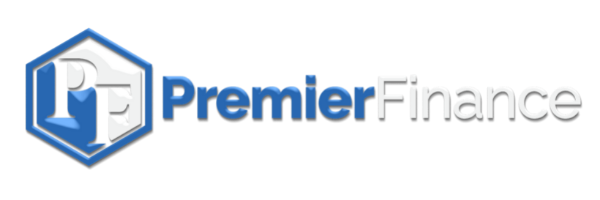In today’s competitive business landscape, securing business finance is essential for growth and innovation. Knowing how to secure financing for a business can help start-ups launch their first product and established enterprises scale successfully.
This guide breaks down the essentials of business finance in 2025, offering practical advice, expert insights, and actionable strategies to help South African entrepreneurs navigate the complex funding landscape.
Why Business Financing Matters
For many businesses, growth opportunities often come with significant costs—hiring new staff, purchasing equipment, or expanding premises. While these investments promise long-term returns, they often require upfront capital that businesses may not readily have.
A well-structured financing solution bridges the gap, enabling business owners to:
- Maintain Cash Flow Stability: Keep day-to-day operations running smoothly without exhausting reserves.
- Seize Growth Opportunities: Invest in technology, infrastructure, or markets at the right time.
- Build Resilience: Prepare for unexpected expenses or market fluctuations.
In South Africa, where small and medium enterprises (SMEs) contribute significantly to job creation and GDP, access to funding is pivotal for sustaining economic growth.

Understanding the Types of Financing Available
Choosing the right type of finance is one of the first steps in your journey. The available options vary widely, each suited to specific needs:
1. Traditional Bank Loans
Banks remain a popular choice for businesses with strong financial histories. These loans often come with:
- Structured Repayment Terms: Predictable monthly payments over a fixed period.
- Lower Interest Rates: Often more affordable than other forms of credit.
- Extensive Documentation Requirements: Be prepared to provide business plans, financial statements, and collateral.
While appealing, traditional bank loans can be challenging for new or smaller businesses due to their stringent requirements and slow approval processes.
2. Alternative Financing Options
The rise of fintech has revolutionized access to funding to simplify the application process, offering:
- Faster Approvals: Decisions in as little as 24 hours.
- Flexible Terms: Options like revolving capital facilities and merchant cash advances.
- Reduced Documentation: Most require basic financial data or direct integration with accounting software.
Alternative lenders are ideal for businesses needing quick, collateral-free funding.
3. Government Grants and Incentives
South Africa offers a range of grant programs for SMEs, including:
- Seda (Small Enterprise Development Agency): Provides financial management and business planning support.
- CIS (Cooperative Incentive Scheme): Offers funding for equipment and feasibility studies.
- BBSDP (Black Business Supplier Development Program): Focuses on empowering black-owned businesses with grants and mentorship.
These non-repayable funds come with strict eligibility criteria and competitive application processes, making preparation critical.
Steps to Prepare for a Funding Application
To maximize your chances of approval, follow these detailed steps:
Step 1: Build a Comprehensive Business Profile
Lenders and investors evaluate your business health before approving financing. Strengthen your profile by focusing on:
- Turnover and Profitability: Show consistent revenue growth and healthy profit margins.
- Industry Position: Highlight your unique value proposition and market share.
- Operational Efficiency: Demonstrate cost management and streamlined processes.
Step 2: Gather Essential Documents
Documentation requirements vary by lender, but generally include:
- Financial statements (audited or management accounts).
- Tax clearance certificates and SARS account summaries.
- Cash flow projections and a business plan tailored to the loan purpose.
For alternative financing, platforms may require access to accounting software like Xero or Sage instead.
Step 3: Understand Your Creditworthiness
Your credit score impacts not just approval chances but also interest rates. Ensure:
- Timely repayment of existing debts.
- Minimal credit utilization.
- Regular reviews of your credit report for errors.
Step 4: Tailor Applications
Every lender has unique criteria. Avoid a one-size-fits-all approach by customizing each application. Clearly articulate how the funds will be used and the expected outcomes.
Step 5: Be Transparent About Risks
Proactively address potential challenges, such as seasonal cash flow variations or debt levels. Transparency fosters trust and positions you as a responsible borrower.
Innovative Financing Trends in 2025
The funding landscape continues to evolve, driven by technological advancements and changing business needs. Key trends to watch include:
- AI-Driven Assessments: Lenders are increasingly using AI to evaluate applications, reducing human bias and speeding up decision-making.
- Revenue-Based Financing: Models like merchant cash advances allow repayment tied to revenue, offering flexibility during slower periods.
- Crowdfunding Platforms: Beyond raising funds, these platforms help gauge market interest and build a loyal customer base.
Strategies for Businesses Not Yet Eligible for Funding
If your business doesn’t meet funding criteria, there are proactive steps you can take:
1. Boost Revenue
- Digital Marketing: Invest in SEO, PPC campaigns, and social media to attract more customers.
- Diversification: Introduce new products or services to tap into unmet market needs.
2. Strengthen Customer Retention
- Implement loyalty programs to encourage repeat business.
- Gather customer feedback and act on it to improve satisfaction.
3. Streamline Operations
- Automate routine tasks and reduce unnecessary expenses.
- Train staff to increase productivity and efficiency.
Key Considerations Before Choosing a Funding Option
Before making a decision, ask yourself:
- How Much Funding Do I Need? Calculate precise costs to avoid over-borrowing.
- What Is My Repayment Capacity? Analyze cash flow projections to ensure affordability.
- Am I Comfortable Sharing Control? Some options, like angel investments, involve giving up equity.
Conclusion
Securing business finance in 2025 is no longer a one-size-fits-all process. From traditional loans to innovative fintech solutions, South African entrepreneurs have more options than ever to access the capital they need. The key lies in understanding your business’s unique needs, preparing thoroughly, and choosing the financing solution that aligns with your goals.
Whether you’re expanding operations, launching a new product, or simply stabilizing cash flow, the right funding can transform your business. Start planning today to turn your vision into reality.


